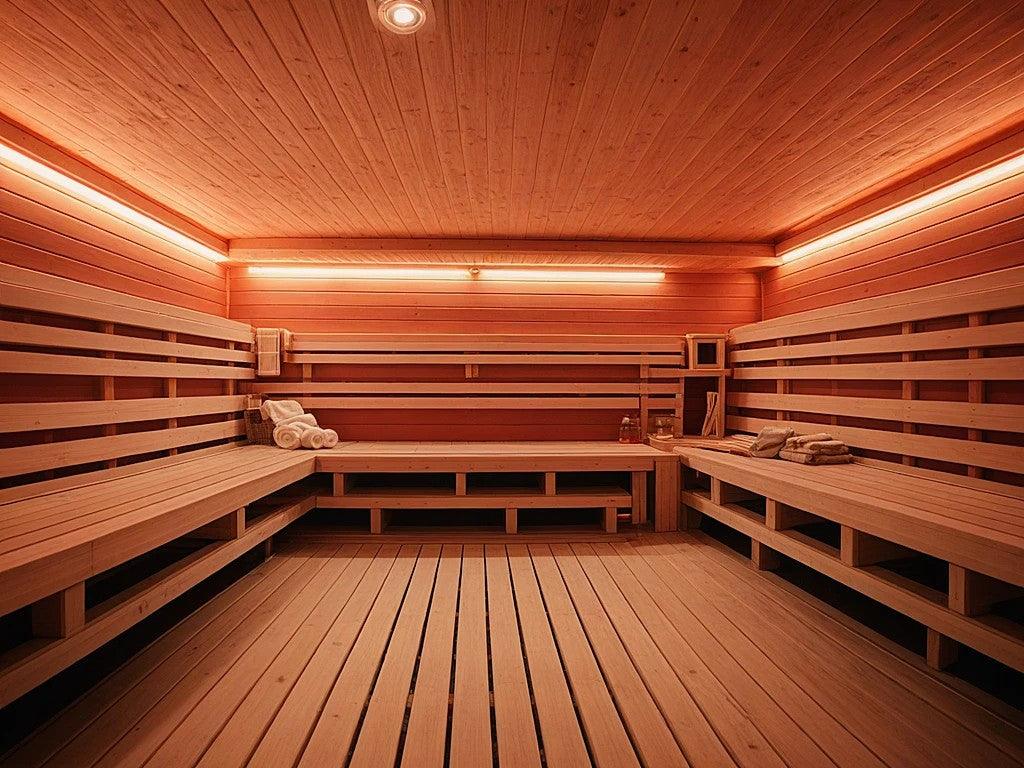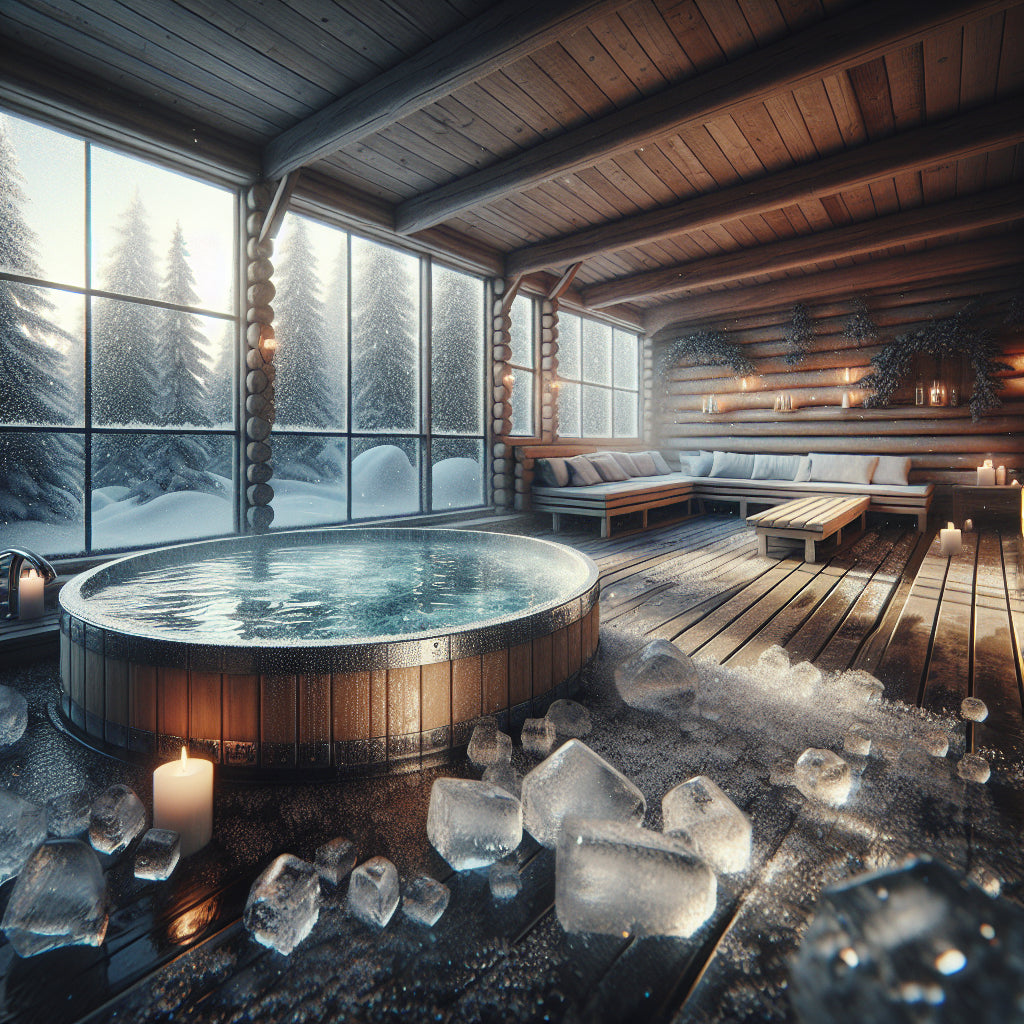Red Light Therapy vs. Infrared Saunas: Which One Should You Choose for Home Wellness?
In the world of modern wellness, saunas have become more than just a luxury – they’re a vital tool for promoting relaxation, improving health, and enhancing recovery. But when it comes to selecting the best type of sauna, two options often come up: red light therapy saunas and infrared saunas. Both therapies offer unique benefits, and understanding their differences can help you make the best choice for your personal wellness needs.
This article will break down the differences between red light therapy and infrared saunas, explain how to incorporate red light therapy in a sauna at home, and help you decide which option is best for you.
The Sauna Debate – Red Light Therapy vs. Infrared Saunas

Both red light therapy and infrared saunas have gained popularity for their impressive health benefits, from reducing inflammation to improving skin health and promoting relaxation. But deciding between the two, especially when bringing the experience into your home, can be tricky. Let’s break it down:
Red Light Therapy:
- How it Works: Red light therapy uses low-wavelength red light to penetrate the skin and stimulate cellular processes.
-
Key Benefits:
- Reduces pain and inflammation
- Boosts collagen production for healthier skin
- Improves circulation and accelerates muscle recovery
- Helps with conditions like acne, joint pain, and skin rejuvenation
Infrared Saunas:
- How it Works: Infrared saunas use infrared light to heat the body directly, penetrating the skin and muscles to encourage detoxification and relaxation.
-
Key Benefits:
- Promotes deep muscle relaxation and joint flexibility
- Enhances detoxification through sweating
- Improves circulation and boosts the immune system
- Reduces stress and promotes relaxation
There is a way you don't have to choose between the two. A few brands in the USA offer red light therapy saunas for an enhanced wellness experience.
What Is Red Light Therapy?
Red light therapy, also known as low-level laser therapy (LLLT), uses wavelengths of light in the red and near-infrared spectrum to penetrate the skin and promote healing. The light stimulates the mitochondria in your cells, encouraging energy production (ATP), which accelerates tissue repair, reduces inflammation, and improves overall cell function.
Key Benefits of Red Light Therapy
- Improves Skin Health: Red light therapy can help reduce fine lines, wrinkles, and acne by stimulating collagen production.
- Reduces Inflammation: It’s known for its anti-inflammatory effects, helping with conditions like arthritis or muscle soreness.
- Promotes Healing: By stimulating cellular regeneration, red light therapy can speed up the healing process for wounds, injuries, or even post-workout recovery.
- Improves Mood and Sleep: Some studies suggest that red light therapy can boost mood and help regulate sleep patterns.
What Is an Infrared Sauna?
An infrared sauna uses infrared heaters to emit infrared light, which directly heats your body without warming the air around you. The heat penetrates deep into the skin, promoting sweating and encouraging your body to expel toxins through its natural detoxification processes. This can be especially beneficial for those seeking to relax, recover, or experience the detoxification benefits of sauna use.
Key Benefits of Infrared Saunas
- Detoxification: The deep heat of an infrared sauna promotes sweating, which helps to remove toxins from the body.
- Muscle Relaxation: The heat helps relax muscles, making it ideal for post-workout recovery or reducing muscle pain and stiffness.
- Improved Circulation: The heat increases blood flow, which can support cardiovascular health and improve circulation.
- Stress Relief: Like other types of saunas, infrared saunas promote relaxation and help reduce stress by calming the nervous system.
Red Light Therapy vs. Infrared Saunas: What’s the Difference?
While both therapies use light to stimulate your body’s natural healing processes, the key differences lie in the type of light used and the way each therapy impacts your body. We put together this handy infographic for you:

Looking for a sauna with both infrared and red light therapy?
Check out our red light saunas, which offer the best of both worlds for a comprehensive wellness experience.
The Differences Explained In More Detail
1. Light Type and Penetration
-
-
Red Light Therapy: Uses low-wavelength red light that penetrates the skin’s surface to promote cellular repair and regeneration. It primarily affects the skin and surface tissues.
-
Infrared Sauna: Uses longer-wavelength infrared light that heats the body deeply, allowing for greater penetration into muscles and tissues. It’s designed for systemic heat therapy, focusing on detoxification and muscle relaxation.
-
2. Therapy Focus
-
-
Red Light Therapy: Primarily focuses on skin health, reducing inflammation, and stimulating healing at a cellular level.
-
Infrared Sauna: Focuses on whole-body wellness, including detoxification, muscle recovery, and cardiovascular benefits.
-
3. Temperature Impact
-
-
Red Light Therapy: Typically doesn’t involve high heat. It uses low-level light to stimulate healing without significantly raising your body temperature.
-
Infrared Sauna: Uses heat to penetrate deep into your body, which raises your core temperature and induces sweating for detoxification.
-
4. Session Length
-
-
Red Light Therapy: Sessions typically last around 10 to 20 minutes.
-
Infrared Sauna: Sessions last anywhere from 15 to 30 minutes depending on your comfort level and sauna settings.
-
Can You Combine Red Light Therapy with an Infrared Sauna?
Yes! You don’t have to choose between red light therapy and infrared saunas. Many saunas on the market now feature both infrared technology and red light therapy, allowing you to enjoy the combined benefits of both therapies during the same session.
Combining these therapies can enhance the effects of both treatments. While the infrared sauna works on deep detoxification and muscle relaxation, the red light therapy can target your skin and promote healing at the cellular level.
How to Use Red Light Therapy at Home
Incorporating red light therapy into your home wellness routine can be a game-changer, offering a wide range of benefits from improving skin health to accelerating muscle recovery. Here’s a comprehensive guide to help you get started with red light therapy at home:
1. Choose the Right Equipment
To effectively incorporate red light therapy into your home, you need the right equipment. There are a couple of options to consider:
- Saunas with Built-In Red Light Therapy: Some saunas come equipped with red light therapy panels integrated into their design. These saunas provide the dual benefits of heat therapy and red light exposure, allowing for a deeply relaxing and therapeutic session.
- Standalone Red Light Panels: If you already own an infrared sauna or want to incorporate red light therapy into your existing wellness space, you can purchase a standalone red light panel. These devices can be added to your sauna or used independently for targeted treatments. Look for high-quality panels that offer wavelengths between 600-650 nm, which is ideal for penetrating the skin and stimulating cellular regeneration.
2. Understand How to Adjust Your Sessions
When using both infrared and red light therapy together, it’s important to understand how to get the most out of each therapy:
- Alternating Therapies: If your sauna features both infrared and red light therapy, consider alternating between the two. Start with infrared for deep muscle relaxation and detoxification, then follow it up with a brief red light therapy session to stimulate skin rejuvenation and promote healing.
- Simultaneous Use: Some saunas are designed to emit both infrared and red light at the same time. This is a great option for a full-body wellness experience, allowing you to enjoy the synergistic effects of both therapies in one session.
3. Session Duration and Frequency
- For Red Light Therapy: Start with shorter sessions and adjust based on your skin’s sensitivity. The ideal duration for red light therapy is between 10-20 minutes per session. Shorter sessions are recommended for those new to red light therapy or those with sensitive skin, while more experienced users may benefit from up to 20 minutes. Consistency is key, so aim for 3-4 sessions per week for optimal results.
- For Infrared Sauna with Red Light Therapy: If you’re using both therapies simultaneously or consecutively, your infrared sauna session should be between 15-30 minutes. The heat from the infrared sauna enhances the effectiveness of the red light, but it’s important to listen to your body. Don’t overdo it—especially if you’re new to sauna use or red light therapy. Sessions longer than 30 minutes can sometimes lead to dehydration or skin irritation, so be mindful of your comfort level.
4. Safety Considerations and Skin Protection
Red light therapy is safe for most individuals, but as with any treatment, it’s essential to take precautions:
- Avoid Overexposure: Red light therapy is non-invasive and generally safe, but too much exposure can cause mild skin irritation. Start with shorter sessions and gradually increase the time as your body becomes accustomed to the light.
- Skin Protection: While red light therapy can be beneficial for the skin, it’s still important to protect your skin during longer sauna sessions. Stay hydrated and ensure the sauna room is well-ventilated. If you have sensitive skin or are prone to burns, consider using a lower intensity setting or wearing protective eyewear during your sessions.
5. Maximize the Benefits with Consistency
For red light therapy to work its magic, consistency is key. Over time, regular sessions will help improve skin tone, reduce inflammation, and promote collagen production. For pain relief or muscle recovery, the cumulative effects of red light therapy can be enhanced with continued use.
Whether you’re using red light therapy for beauty or wellness, integrating it into your home sauna can be an enriching addition to your routine. With a carefully curated setup and an understanding of how to adjust your sessions, you can enjoy a personalized, effective red light therapy experience that brings long-term health benefits right into your home.
Start with manageable sessions and gradually increase the time as you get accustomed to the soothing effects of red light therapy. Enjoy your sauna sessions as a way to relax, rejuvenate, and heal!
Which Sauna Therapy Is Right for You?
Both red light therapy and infrared saunas offer unique health benefits, and the choice between them comes down to your specific wellness goals.
-
If your primary focus is skin health, anti-aging, or cellular repair, red light therapy may be the best choice for you.
-
If you're more interested in detoxification, muscle recovery, and overall relaxation, then an infrared sauna is a great option.
Ready to bring home the best sauna experience? Visit Infinite Sauna to browse our selection of infrared saunas and red light therapy saunas. Find the perfect sauna for your wellness journey today!
However, if you're looking for a comprehensive wellness experience, you don’t have to choose between the two. Hybrid saunas that offer both infrared and red light therapy provide the best of both worlds, delivering deep healing and skin rejuvenation all in one session.
Additional Resources
-
Effects of Red Light Therapy on Skin Rejuvenation
This study reviews how red light therapy influences skin health by stimulating collagen production and improving the appearance of fine lines and wrinkles.
Read more on PubMed -
Red Light Therapy: A Review of Its Effectiveness for Pain Relief and Healing
This article explores the therapeutic potential of red light therapy for reducing inflammation, accelerating wound healing, and easing chronic pain.
Read the study on ScienceDirect -
Understanding the Benefits of Sauna Use for Mental and Physical Health
An in-depth look at how sauna therapy contributes to stress relief, improves mental health, and boosts overall well-being through the promotion of heat shock proteins and muscle relaxation.
Find more details on PubMed
These resources will provide you with valuable insights into the scientific backing behind red light therapy and infrared saunas, helping you optimize your wellness journey with credible and research-supported information.









Leave a comment
This site is protected by hCaptcha and the hCaptcha Privacy Policy and Terms of Service apply.